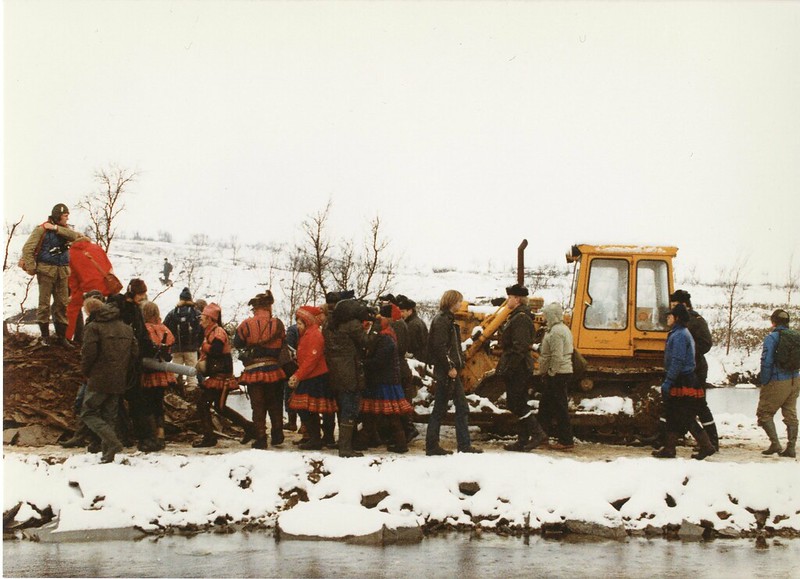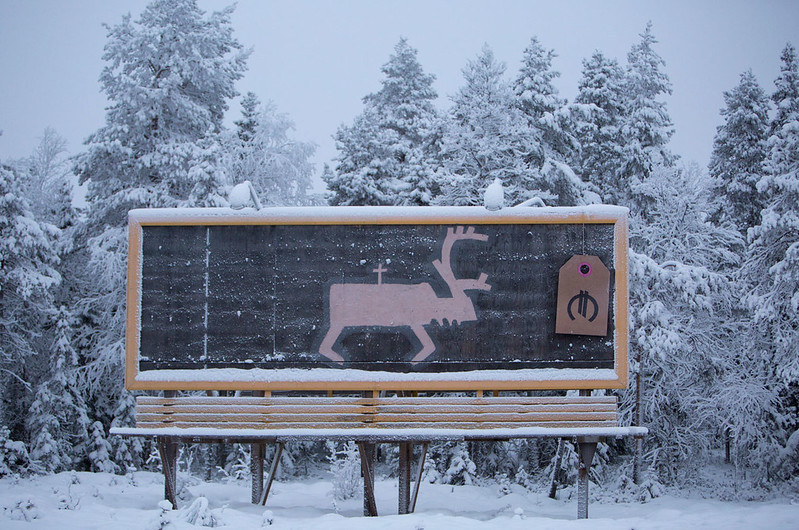Although they stole the mountains, they forgot to change their names, each mountain is still carrying the name in our language, even the mines do; the rivers are still singing in Sami.
– Sofia Jannok, Sámi singer and activist
During the 15th Sámi Conference in Helsinki in 1992, the 6th of February was proclaimed to be the Sámi National Day to commemorate the anniversary of the first Sámi Congress held in Trondheim 75 years before. The day was established by the Sámi to cherish their identity, and it meant a significant step forward for Sámi’s pride, after years of disavowing their heritage on account of discrimination. As the calendar marks the 30th Sámi National Day, however, the Sámi find themselves relentlessly fighting once again for the preservation of their territory, evidencing that there is still a long way to go when it comes to indigenous rights.
Beginning in the 1650s, the Sámi were gradually forced to give up parts of their homeland, Sápmi (commonly referred to as “Lapland” from the term “Lapp” to allude to its inhabitants, which is considered pejorative). The Sámi hold unique relationships with this territory, which they feel deeply connected to and that has shaped their views on nature, as well as their principles, ways of living, and social structures. Sápmi’s rolling hills, tranquil valleys, and dense forests have also been a source of inspiration for many poets and writers throughout the centuries, making the land’s mesmerising nature a recurring topic in their artwork. However, owing to the abundance of natural resources in the region, it has also caught the attention of the forestry, mining, and other exploitative industries that wish to operate in the area. The Sámi’s attempts to safeguard their territory from these industries have resulted in several confrontations, accompanied by some heated debates in Scandinavia and beyond.
As long as we have water, where fish swim
As long as we have lands, where reindeer graze and wander
As long as we have grounds, where wild animals hide
Then we have consolation on this earth
When our homes have been destroyed and our lands devastated
– where will we live?
– Paulus Utsi, Sámi poet. Translated by Margaret Rainey
One of the major disputes concerning Sámi land rights was what would later be known as the Alta controversy. This conflict developed in the late 1970s when the Norwegian Water Resources and Energy Directorate (NVE) received authorisation to build a dam and power plant on the Alta River in Finnmark, a territory that had historically belonged to Sápmi. This construction would interfere with traditional Sámi activities, such as wild salmon fishing and reindeer herding, and it would require the evacuation of the Sámi settlement of Máze, due to the likelihood of severe flooding in the area. The proposal was met by strong opposition from the Sámi and sympathisers from around the world who united to object to the project. Despite all the resistance, the plan was given the approval from the Norwegian Supreme Court in 1982 and the hydroelectric power plant was constructed and started operating by the late ‘80s.


Even though the protesters failed to stop the project, the massive demonstrations drew international attention to the issue of indigenous environmental rights. Among other things, the events inspired the foundation of the Sámi Parliament of Norway in 1989, with Sweden following shortly after in 1993. Finland was the first to establish a Sámi parliament in 1973, prior to the events in Alta. The Kóla Sámi Assembly of Russia, on the other hand, was founded mirroring the Sámi Parliaments in the Nordic countries, but it remains a symbolic entity, since it has not yet been recognised by the Russian government.
In spite of all these accomplishments, there have been several other projects in the quest for natural resources in Sápmi. The most recent one is the ongoing case of the iron deposit of Gállok (the Sámi name for Kallak), which is commonly referred to as the “New Alta”. The proposal comes from a British mining company that aims to build a mine close to the municipality of Jokkmokk, a place with strong Sámi ties.


Many have accused this project of being a violation of Sámi rights, as the Sámi communities of Jåhkågasska and Sirges would lose important grazing land. This would, in turn, pose a serious challenge for reindeer herding in the area, a practice closely linked to the Sámi culture and identity. Another concern has been raised by numerous environmental activists about heavy metals leaking into the ground and compromising a drinking water source directly adjacent to the prospective mining location. On top of that, it has also been asserted that the mine would produce substantial air pollution and high greenhouse gas emissions due to the increase of heavy transportation, as well as endangering the area’s biodiversity and natural heritage.
The negotiations for this project are still underway, but the final decision from the Swedish government on whether to grant permission is expected within weeks. Despite the conflict being classified as a matter of access to natural resources, it has been pointed out that this might indeed be just a little piece of a much bigger mosaic of issues related to Indigenous peoples’ rights, as well as a matter of environmental and social justice. Moreover, beyond the possible repercussions of the mine in Gállok, it is crucial to reflect on the future implications of the continuous exploitation of natural resources in Sápmi and the consequences it may have for its natural, cultural, and indigenous heritage.
Ivette Nogués
Editorial note: this article was edited on 06/02/22 to rectify the spelling of “Sámpi” to “Sápmi”. In this updated version, we also wished to underline that “Lapland” is considered a pejorative term. We apologise for this error.




